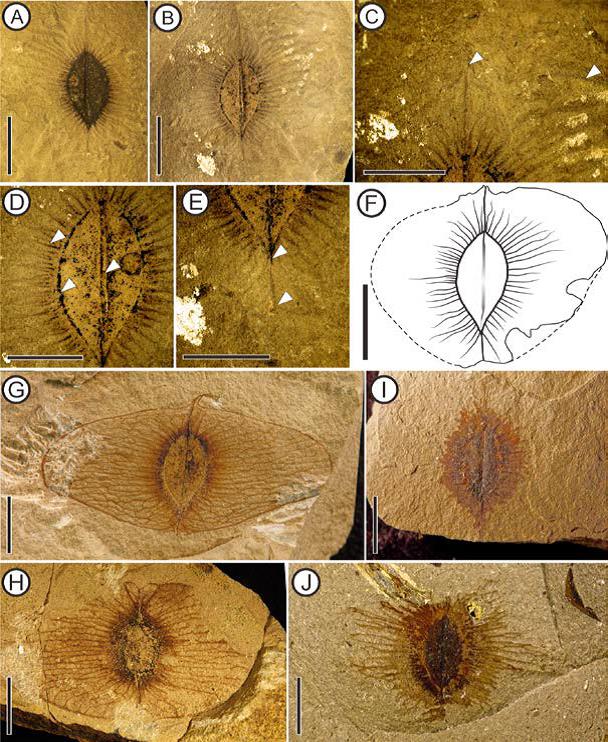Illigera Blume (Hernandiaceae) is a liana genus distributed mainly in the tropical regions of Africa and Asia. Fossil fruits of Illigera were first recognized in the middle Eocene of western North America in 2010. However, no other fossils of Illigera have been reported since then.
In recent paleobotanical investigation, researchers from Xishuangbanna Tropical Botanical Garden (XTBG) have unveiled a Paleogene flora that is totally different from today's vegetation in central Tibet. This provides novel insights into the paleoenvironmental change during the evolution of Tibetan Plateau (TP).
In a study published in Journal of Systematics and Evolution, the researchers presented fossil fruits of Illigera recovered from the Jianglang flora in the early middle Eocene Niubao Formation, Bangor Basin, central TP.
The fossil winged fruits are characterized by their eroded fruit wings, well‐preserved fusiform locular areas with a median ridge bisecting the fruit, and short veins fanning radially outward.
The fossil fruits are assigned to Illigera eocenica, a fossil species originally discovered in the western North America.
“These fossils represent the second fossil report of Illigera and the first in Asia,” said Prof. ZHOU Zhekun of XTBG.
The presence of I. eocenica accompanied by the overall macrofossil assemblage and previous palynological study indicates a warm and humid environment in central Tibet during the Paleogene, which prefers a complex topography of a valley system than an already very high plateau at that time.
“We hypothesize that Illigera might have an origin in the Northern Hemisphere at least by the middle Eocene, and that a Paleogene dispersal event for Illigera might have occurred from the Northern Hemisphere to Africa,” said ZHOU Zhekun.
Contact
Prof. ZHOU Zhekun Ph.D
Key Laboratory of Tropical Forest Ecology, Xishuangbanna Tropical Botanical Garden, Chinese Academy of Sciences, Mengla, Yunnan 666303, China
E-mail: zhouzk@xtbg.ac.cn

Fossil fruits of Illigera eocenica. (Image by WANG Tengxiang)

